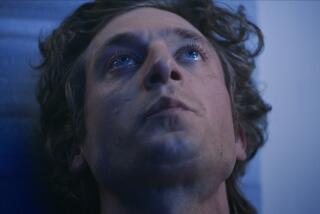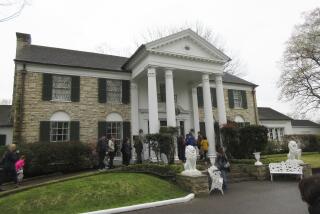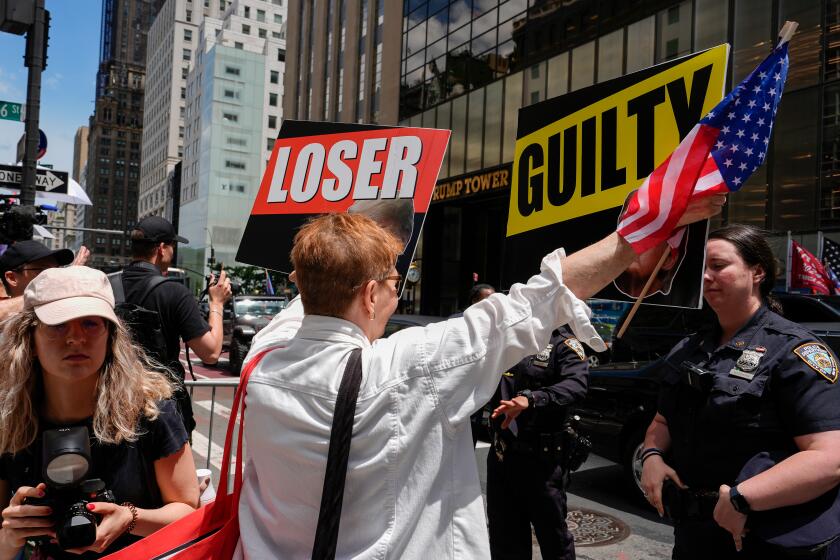Using a Cornfield as a Canvas for Public Art
Is there a kernel of truth to the promise that public appreciation will grow as an unusual art project pops up at one of Los Angeles’ most neglected industrial sites?
Artist Lauren Bon will find out in September, when a $2-million patch of corn she plans to plant as an art installation is ready for harvest at a barren lot between Chinatown and Lincoln Heights.
State officials have assured skeptical residents who live near a 32-acre former rail yard known locally as the “Cornfield” that Bon’s installation will enhance the area and help sow the seeds for a permanent public park there.
Plans for the six-month installation were outlined Monday night for quizzical locals who have waited years for development of the state-owned parkland. Residents ultimately voted to endorse Bon’s project -- provided they have a voice in its planning.
The community has been fighting for years to transform the vacant lot into a park. Though the state’s parks department agreed to buy the lot a few years ago, the site has remained an eyesore as officials and members of a local advisory committee debated various development plans that would balance recreational and cultural needs.
Supporters of the art installation promised it would be anything but corny -- and would become a cultural draw to introduce the neighborhood to people from the trendy Westside and the rest of the city.
“Frankly, people don’t usually come to our side of town for an art installation,” Assemblywoman Jackie Goldberg (D-Los Angeles) told residents. “This time, people will have to cross La Brea and come this way.”
An Annenberg Foundation grant will finance cultivation of the torpedo-shaped parcel bordered by Spring Street, Broadway and the Los Angeles River. New soil will be trucked in for the corn cultivation, and a new irrigation system will remain after the fall harvest is over, officials said.
Bon, 42, of Santa Monica is a trustee of the Annenberg Foundation. She said she proposed the corn-planting project as an artistic statement and as a way to help clean up the site.
“I’m really fascinated by past industrial sites and how they’re redeemed,” she said. “The idea is not just to make a place pretty, but to make it healthy again.”
Bon has named her proposed project “Not a Cornfield.” Though some have likened it to Christo’s “The Gates” installation that was disassembled after two weeks in New York’s Central Park, hers is an “ephemeral,” nontraditional art form that will naturally fade away after six months, she said.
The Cornfield site takes its name from the stalks of corn that sprouted along the rail yard’s tracks from seeds that spilled from hopper cars being pulled into Los Angeles beginning in the 1870s.
Developed by the Southern Pacific Railroad, the train yard served Los Angeles’ first rail depot, where thousands of newcomers arrived to start fresh in the West.
In earlier days, the flat area at the foot of the Elysian hills and adjacent to the Los Angeles River was the site of a thriving Native American village seen in 1769 by explorers of the Portola expedition. Later, it was where the Los Angeles pueblo’s first water supply -- the Zanja Madre, or “mother ditch” -- was constructed.
Bon said a mobile cistern holding water drawn from the river would be incorporated in her project to demonstrate zanja irrigation. An overhead misting system will also be used and will be illuminated at night with turquoise lights that will give the field a colorful glow, she said.
A mile-long trail will circle the cornfield and “a processional path” will lead to “a sacred place” near the center of the corn where stories will be told, Bon said.
The corn will be harvested in conjunction with a fall festival in mid-September.
Corn-planting project manager Lynne Dwyer, a Cypress Park landscape architect, said various types will be planted, including sweet, edible corn and a variety used in the production of ethanol.
During the growing season, the installation will include a radio transmitter that will relate to passersby the history of the Cornfield and its previous inhabitants, Bon told about 50 people at Monday’s meeting at the Los Angeles River Center and Gardens in Glassell Park.
Some in the crowd objected that much of the project’s planning had occurred without community discussion.
Others complained that the plans had been hastily sprung on them.
But Goldberg said requirements for an environmental report, coupled with nature’s timetable for mid-May planting, forced officials to speed up things.
Though many in the audience grumbled that outsiders once again seemed to be coming in to determine their neighborhood’s destiny, others defended the art proposal.
“Here’s something that’s temporary, it’s beautiful, and it’s not taking our tax money,” said Alicia Brown, a Solano Canyon activist whose neighborhood overlooks the Cornfield.
Agreed Edwin P. Mah, a Chinatown leader: “We want to see some action out there.”
Robert Garcia, executive director for the Center for Law in the Public Interest, termed the corn project “a brilliant concept” that would end the barren lot’s blight.
He urged Bon to “directly engage community participation” in the project, and to make certain that its interpretive materials “honor the diverse community” that has worked to create the future state park.
Bon pledged to do just that. She stressed that she was not someone who was simply looking to use the community “as a blank canvas,” as she put it.
The corn project would be a good way to launch the permanent development of the Cornfield, Goldberg told the crowd before it voted 43 to 3 to support Bon’s installation.
When the corn is picked, blossoms will blanket the site until the state begins its permanent parkland development, art project planners said.
After the harvest, the thousands of withered corn stalks will be removed, the site will be graded, and the 32 acres will be seeded with wildflowers, they said.
More to Read
The biggest entertainment stories
Get our big stories about Hollywood, film, television, music, arts, culture and more right in your inbox as soon as they publish.
You may occasionally receive promotional content from the Los Angeles Times.







